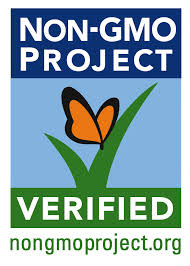What exactly are GMOs? (Genetically Modified Organisms)
 GMOs – Genetically modified organisms. They sound like something that you might find at an aquarium, learn about on the Discovery Channel or find in a lab, right? The truth is that they are made in labs, but the scary part is that unless you live under a rock, they most likely live in your body as well! I watched a very shocking and eye opening documentary about GMOs called “Genetic Roulette: The Gamble of our Lives.” When you have some time, I strongly urge you to check it out.
GMOs – Genetically modified organisms. They sound like something that you might find at an aquarium, learn about on the Discovery Channel or find in a lab, right? The truth is that they are made in labs, but the scary part is that unless you live under a rock, they most likely live in your body as well! I watched a very shocking and eye opening documentary about GMOs called “Genetic Roulette: The Gamble of our Lives.” When you have some time, I strongly urge you to check it out.
Genetically modified organisms or GMOs are plants or animals created through genetic engineering. This experimental technology merges DNA from different species, creating unstable combinations of plant, animal, bacterial and viral genes that cannot occur in nature or in traditional crossbreeding. If that doesn’t sound scary, I don’t know what does! GMOs have been linked to a number of health problems, including gastrointestinal disorders, allergies, inflammatory diseases and infertility. GMOs have even been found in babies’ umbilical cords! No wonder our children have so many health problems these days!
Over 80% of the U.S. food supply contains GMOs. Soy and corn are big culprits. Almost 95% of the soy products in the United States are genetically modified. Soy lecithin is an emulsifier that is used in many processed foods and is usually genetically modified. Soy lecithin is in everything from granola bars to chocolate. And I’m sure that you have noticed that corn is in everything too, especially processed foods – almost every type of chip (even some kale chips) has corn in it. The next time that you pick up a box, bag or a can at the supermarket, read the ingredients and I’m sure that you’ll see derivatives of corn or soy as ingredients.
According to The Non-GMO Project, the following crops are at high risk of being genetically modified:
•Alfalfa (first planting 2011)
•Canola (approx. 90% of U.S. crop)
•Corn (approx. 88% of U.S. crop in 2011)
•Cotton (approx. 90% of U.S. crop in 2011)
•Papaya (most of Hawaiian crop; approximately 988 acres)
•Soy (approx. 94% of U.S. crop in 2011)
•Sugar Beets (approx. 95% of U.S. crop in 2010)
•Zucchini and Yellow Summer Squash (approx. 25,000 acres)
The Non-GMO Project is an independent non-profit organization that verifies non-GMO food products. In order to ensure that you’re not eating a GMO, make sure to look for foods with the “Non-GMO Project Verified” seal on it. Many organic farmers do not use genetically modified seeds, however, an organic label does not ensure that a food is not genetically modified. Although GMOs are an excluded method under the National Organic Program, organic certification does not require GMO testing. To ensure that you are not eating GMOs, make sure to look for organic foods with the “Non-GMO Project Verified” seal on them.
It’s important for all of us to become aware of the GMOs in our diet and try to eliminate them, but it’s especially important for those of us with compromised immune systems or developing immune systems. So for those of you with autoimmune diseases and the parents out there, I really want to challenge you to take action and change your behavior. Are you with me? What’s the first step you’re going to take?
– AmiCietta







I have started a home garden. Keeping chickens is in my near future. It’s so sad that you can’t trust the food you buy. Thanks for the article!
Great Camille! What are you growing? Yes, it’s sad that you can’t trust the food that you buy, but you have the right idea. I’ll be writing an article about farm fresh food in the next couple of weeks.